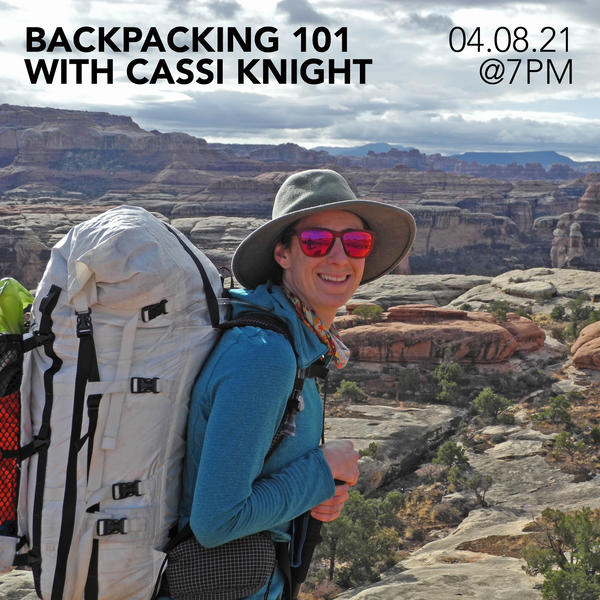In the "Backpacking 101" webinar with Cassi, she reviewed a ton of awesome items and what she includes in her backpacking kit:
Backpacking Gear Basics:
- Backpack: There are several options! Ultralight options save on your pack's base weight, but compromise on comfort as your gear weight adds up. More traditional backpacking packs with full internal frames will carry more weight more comfortably, but also weigh more empty.
- Sleeping Bag: There are options of both synthetic and down. Synthetic performs better when wet, but doesn't pack down as much as a down back and over time will eventually "pack out" or lose its loft which is critical for keeping you warm! A down back comes at a higher cost, but overtime will last longer.
- Sleeping Pad: These come in many sizes, shapes, lengths, and thermal insulation or "R-value" ratings, which is how a sleeping pad's thermal insulation is measured.
- Shelter / Tent: A shelter can be as simple as a tarp structure supported by your trekking poles and is usually a single-wall shelter which makes it ultralight, but also might be more prone to condensating on the inside. A traditional tent or shelter is usually a bit heavier with the internal tent, rainfly, and poles. Sometimes a traditional tent can be set up using only the rainfly and poles, but this should be tested at home - not on your first trip!! And beware of bug season if you choose this set-up! No internal mesh tent can leave you vulnerable to mosquitos!
- Tarp / Ground Cover / Tent Footprint: This piece of the puzzle can be a sheet of tyvek, a specific footprint for you tent, a tarp, or sheet of plastic. There are pros and cons to each - weight vs waste vs cost.
- Pillow: This is optional and personal preference! Some people pack a full bedroom pillow, others stuff some clothes into a stuff sack and call it good. Cassi suggested stuffing a stuff sack with some soft goods and sliding that whole stuff sack into a buff or "neck gaiter" to give your face something soft to rest on.
- Headlamp or Flashlight
Camp Kitchen:
- Water Filtration System
- Water Bladder / Nalgene / Evernew Soft Flask
- Stove / Jetboil (+ fire source)
- Fuel
- Pot / Pan
- Eating Utensil
- Mug / Cup
- Bear Canister / Ursack
Navigation:
- Paper Map
- Downloaded Map (Gaia on phone)
- Compass
- GPS
- Satellite Messenger (Garmin InReach) or Personal Locator Beacon (PLB)
- Power Bank or External Charging Battery
Emergency Supplies:
- First-Aid Kit or supplies
- Whistle (often times this is built into the pack chest strap!)
- Lighter / Matches
Health & Hygiene:
- Hand Sanitizer
- Toothbrush / Toothpaste
- Sanitation Trowel
- Toilet Paper / Wipes (& sealable bag to pack it out)
- Prescription medications
Other:
- Sunglasses
- Sunscreen
- Lip Balm
- Sun Hat
- Insect Repellent (optional and trip dependent)
- Blister Treatment Supplies
Extras:
- Camp Chair
- Camera
- Deck of Cards
If you want to learn more about the systems and gear she uses and some awesome audience questions, check out our
Backpacking 101 video on our YouTube channel!

